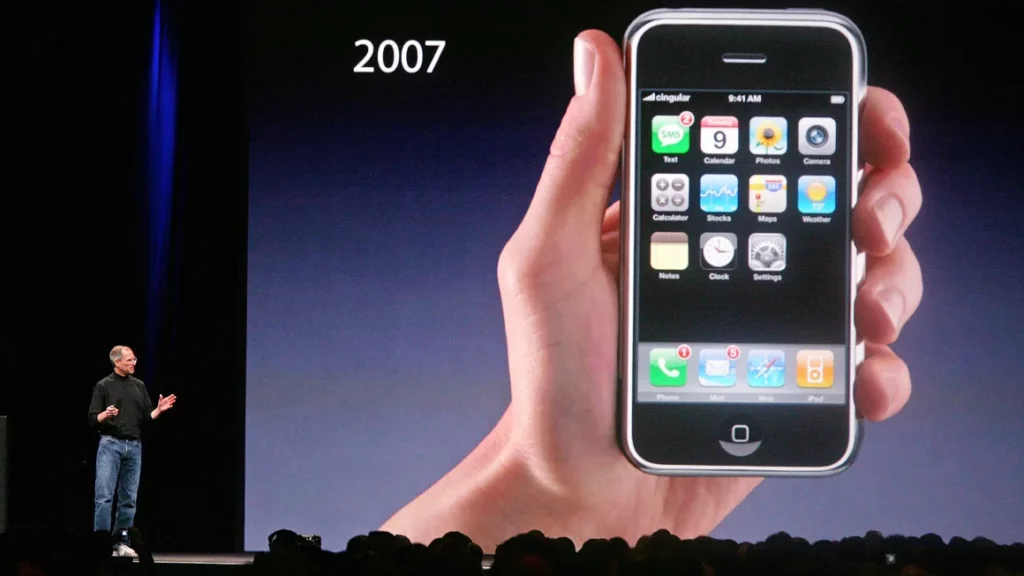
You’ve done it.
After months (or maybe years) of hard work, your product is finally ready. It’s polished and tested, and you’re confident it’ll make a real difference in people’s lives. But now comes the crucial part—getting it out there.
Think about it. How many great products have you stumbled upon years after their release, wondering, “How did I not know about this sooner?” That’s often the result of a launch that didn’t quite hit the mark.
A well-planned product launch can be the difference between your creation gathering dust and flying off the shelves.
This guide is for you if you’re sitting on a finished product and thinking, “What’s next?” We’ll walk through the steps to create a launch that does justice to all your hard work.
Ready to give your product the debut it deserves? Let’s get started.
Table of Contents
Step 1: Define Your Target Audience
You’ve got a great product, but who’s it for? This isn’t just a casual question—it’s the foundation of your entire launch strategy.
Start by identifying your ideal customer. Who will get the most value from what you’re offering?
Think about their:
- Age
- Occupation
- Interests
- Lifestyle
The more specific you can be, the better.
Next, dig into their needs and desires. What keeps them up at night? What problems are they trying to solve? Your product should be the answer to at least one of these questions.
Finally, create buyer personas. These are detailed profiles of your target customers. Give them names, backstories, and specific characteristics. It might feel a bit like creating characters for a novel, but trust me, it’ll make your marketing efforts much more focused and effective.

Remember, you’re not trying to appeal to everyone. A targeted approach will always yield better results than casting a wide, unfocused net as you’re focusing on what matters.
Step 2: Develop a Strong Value Proposition
With a clear understanding of your audience, the next step is to define how you’ll communicate the unique value your product offers.
Your value proposition is the core of your product’s appeal. It’s not just about what your product does—it’s about how it makes your customers’ lives better.
So, focus on benefits over features. Customers want to know how your product will improve their lives—whether it saves them time, boosts productivity, or helps them relax. Make these benefits crystal clear.
Your value proposition should be clear, concise, and compelling. If you can nail this, you’re already halfway to a successful launch.
Step 3: Set Your Pricing Strategy
Let’s talk money. Pricing can make or break your launch, so it’s crucial to get it right.
Start by researching your competitors. What are they charging for similar products? This gives you a baseline, but don’t just copy their prices—your product is unique, and your pricing should reflect that.

Next, determine your pricing model. You have several options to consider:
- Tiered Pricing: Offer different levels of your product, such as a basic and premium version.
- Subscription Service: Provide a recurring payment option for added features like cloud storage or advanced security updates.
- One-Time Purchase: Set a single price for the product without additional ongoing costs.
Choose a model that aligns with your product and your target audience’s expectations.
Don’t forget to plan for launch promotions or discounts. An introductory offer can be a great way to entice early adopters. Just make sure any discounts are sustainable—you don’t want to undervalue your product in the long run.
Your price isn’t just a number; it’s a statement about your product’s value. Set it too low, and people might question the quality. Too high, and you might scare off potential customers. Find that sweet spot where your price reflects the value you’re offering.
Step 4: Prepare Your Sales Channels
You’ve got your product, your audience, and your price. Now, where are you going to sell it?
If you’re selling online, optimize your website or e-commerce platform. Make sure it’s user-friendly, mobile-responsive, and capable of handling a surge in traffic. Your checkout process should be smooth and secure—you don’t want to lose sales because of technical hiccups.
Setting up inventory management is crucial, especially if you’re selling physical products. You need to know exactly how much stock you have and when you need to reorder. Nothing’s worse than a successful launch that ends in “Out of Stock” messages.
Whether online or offline, your sales channels should be ready to go before you launch. Test everything multiple times. A seamless buying experience can turn a curious browser into a happy customer.
Step 5: Develop a Pre-Launch Marketing Strategy
Building buzz before your launch creates anticipation. It helps you gauge interest and can even lead to early sales or pre-orders.
Set up a landing page to introduce your product, highlight its benefits, and capture email addresses. For example, if you’re launching a skincare product, include a fun quiz to help visitors identify their skin type and find the best product match. The quiz results can be sent via email, engaging visitors and building an email list for updates and exclusive offers.

Speaking of building an email list. This is your direct line to people who’ve shown interest in your product. Don’t spam them, but do keep them in the loop with teasers and exclusive information, and send them at the right time.
Leverage social media to engage with your target audience. Share behind-the-scenes glimpses, countdown to launch day, and maybe even run a contest or two. Remember, it’s about building relationships, not just broadcasting messages.
And don’t forget about press releases. A well-crafted press release can get your product in front of journalists and industry publications, generating valuable media coverage and credibility. Write one announcing your upcoming launch, highlighting what makes your product newsworthy. If you’re unsure how to write a product launch press release, check out this blog post with successful press release examples and more guidance.
For launch event, consider a separate event press release to attract media attention. Using PR distribution services can ensure your release reaches the right people, maximizing your launch’s impact.
Step 6: Develop a Content Marketing Plan
Start by developing a content calendar to plan out what you’ll publish, where, and when. This keeps you organized and ensures a steady stream of content leading up to and beyond your launch. Include various types of content, such as:
- Blog posts that dive deep into the problems your product solves.
- Videos that showcase your product in action.
- Infographics that present data in an eye-catching way.
Mixing it up keeps things interesting and caters to different preferences.
Something to keep in mind: good content provides value whether or not the reader ends up buying your product. Build trust and establish yourself as an authority in your field.
Step 7: Plan Your Launch Event
Your launch event is the grand unveiling of your product, so make sure you create a strong first impression.
First, decide between a virtual or physical event. Virtual events can reach a wider audience, while physical events offer a more personal touch. Choose based on your product, audience, and budget.
Prepare compelling product demonstrations. Show your product in action, highlighting its key features and benefits. If possible, let attendees try it out themselves.
Invite media and influencers. Their presence can amplify your launch beyond the event itself, reaching their followers and networks, and generating buzz and credibility. For instance, SK-II’s launch at their Mid Valley, Kuala Lumpur concept store featured SK-II Global Ambassador MINA from TWICE, along with prominent KOLs and media from various countries, creating widespread coverage and excitement.

And don’t forget to send out that event press release we mentioned earlier. It should include all the key details: what, where, when, and why journalists should care.
Remember, your launch event is not just about the product—it’s about creating an experience that gets people excited about what you’re offering.
Step 8: Prepare Customer Support
Customer support is often an overlooked aspect of a product launch, but it can make all the difference in turning a good launch into a great one.
It’s crucial for maintaining customer satisfaction and addressing any issues that may arise. Here’s how to ensure your support team is launch-ready:
Train your support staff on all aspects of your product. They should know your product inside and out, understand its benefits, and be able to answer any questions customers might have swiftly and confidently.
Set up multiple support channels to cater to different customer preferences. This might include email, phone, live chat, and social media.
Create a comprehensive FAQ section and self-service resources. Many customers prefer to find answers on their own, and this can reduce the load on your support team.
Implement a system to track and respond to customer feedback using tools like CRM software. This way, you can spot patterns and recurring issues, quickly address concerns, and make improvements, ensuring a better experience for everyone.
Step 9: Execute Your Launch
Launch day is when all your planning comes to fruition. A smooth execution can set the tone for your product’s future success.
Coordinate all your marketing efforts to create maximum impact. Ensure your social media posts, email campaigns, and any paid advertising go live at the right times.

Monitor your sales and website traffic closely. This real-time data can help you identify and address any issues quickly.
Engage with your customers in real-time. Respond to comments, questions, and feedback promptly across all platforms. But do be prepared to make quick decisions. Despite all your planning, unexpected situations may arise. Stay flexible and ready to adjust your strategy as needed.
Step 10: Post-Launch Follow-Up
The work doesn’t end once your product is out in the world. Post-launch activities are crucial for maintaining momentum and ensuring long-term success. Here’s what to focus on:
Gather customer feedback systematically. Use surveys, interviews, or focus groups to understand how your product is being received and where improvements can be made. Encourage product reviews from your early customers too. Positive reviews can significantly influence potential buyers and improve your product’s visibility.
Besides that, address any issues or concerns promptly. Quick resolution of problems can turn potentially negative experiences into positive ones. Then, analyze your launch data thoroughly. Use the insights gained to refine your strategies for future product releases or updates.
Continue engaging with your audience through content and social media. Keep the conversation going to maintain interest in your product and brand.
Real-World Examples of Successful Product Launches
Learning from successful launches can provide valuable insights. Let’s look at a few standout examples.
#1 Apple’s iPhone Launch
When Apple unveiled the iPhone in 2007, they masterfully built anticipation. Steve Jobs’ presentation was a perfect blend of showmanship and product demonstration. Apple created a must-have perception, leading to long lines on launch day.
Key takeaway: A well-executed launch event can create massive buzz.

#2 Tesla’s Model 3 Pre-order Strategy
Tesla’s approach to launching the Model 3 was unconventional but highly effective. They opened pre-orders for a car that wouldn’t be delivered for over a year, securing hundreds of thousands of $1,000 deposits. This strategy generated cash flow and proved market demand.
Key takeaway: Creative pre-launch strategies can build commitment and provide valuable market validation.
#3 Netflix Entering India
When Netflix entered India, it adapted its content library to cater to regional tastes. They recognized the popularity of regional content and budget-conscious consumers
Netflix adapted its content library to include more regional shows and movies, and offered a tiered subscription model with a more affordable option. This tailored approach catered to the specific needs of the Indian audience, contributing to their successful market entry.
Key takeaway: To succeed in untapped markets, companies must understand the unique needs and preferences of local consumers.

#4 Spotify’s Freemium Model
Spotify’s launch success was largely due to its freemium model. By offering a free, ad-supported tier alongside its premium service, Spotify quickly gained a large user base. This approach allowed users to experience the product before committing to a paid subscription.
Key takeaway: Lowering barriers to entry can accelerate adoption and lead to long-term success.
Common Pitfalls to Avoid in Product Launches
Even with careful planning, launches can go awry. Let’s take a look at some common pitfalls to watch out for.
#1 Targeting Too Broad an Audience
Trying to appeal to everyone often results in appealing to no one. A too-broad focus can dilute your message and make your marketing efforts less effective.
Solution: Define your target audience clearly and tailor your launch strategy to their specific needs and preferences.
#2 Neglecting Market Research
Launching without thoroughly understanding your market can lead to misaligned products or messaging.
Solution: Invest time in comprehensive market research to understand your audience, competitors, and industry trends.
#3 Underestimating Marketing Needs
Some companies focus so much on product development that they neglect marketing until it’s too late.
Solution: Start your marketing efforts early and allocate sufficient resources to promote your launch effectively.
#4 Poor Timing
Launching at the wrong time – like during a major holiday or alongside a competitor’s big release – can hinder your product’s visibility.
Solution: Research industry events and plan your launch date strategically.
#5 Overcomplicating the User Experience
A product that’s difficult to understand or use can turn off potential customers, regardless of its innovative features.
Solution: Prioritize user experience in your product design and provide clear, accessible instructions and support.
By learning from these successful examples and avoiding common pitfalls, you can increase your chances of a successful product launch. Every product and market is unique, so use these insights as a guide, but always tailor your approach to your specific situation.
Wrapping Things Up
A successful product launch is the culmination of strategic planning, thorough preparation, and seamless execution. It requires a collaborative effort from all teams—marketing, sales, customer support, and beyond.
Get the whole team involved to gather different insights and make sure everyone’s on the same page. Keep communication clear and consistent to avoid any mix-ups, and ensure everyone knows their roles and responsibilities to keep things running smoothly.
By following these steps and learning from real-world examples, you can give your product the debut it deserves. Don’t forget that the work doesn’t stop after launch day; continue refining your approach based on customer responses and data to ensure long-term success.
Now, you’re all set for the launch. Good luck with the launch and everything that comes after!
The following article may contain the author’s opinions and interpretations of the subject matter. Any of the products, services, or platforms mentioned is not sponsored or affiliate
Featured Image courtesy of vectorpouch on Freepik
